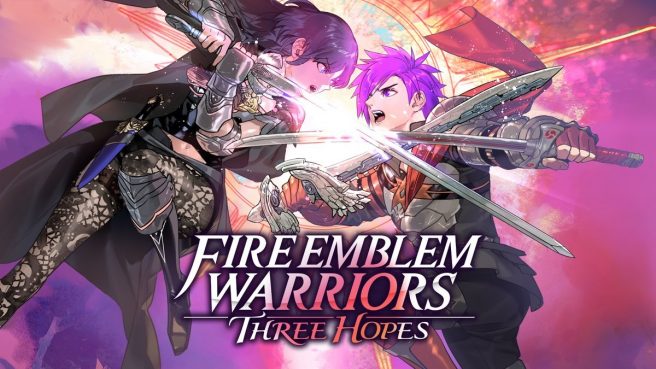Fire Emblem Warriors: Three Hopes devs on monsters, Expeditions, base camp, character inclusions, more
Bonus Questions
Regarding the Scarlet Blaze, Azure Gleam, and Golden Wildfire chapters, what was the tale you wanted to tell?
Iwata: In order to make it a different experience from Three Houses, one of the scenario writers explained about wanting to depict the things that had been left unfinished in the main game. In Scarlet Blaze, it’s the battle against ‘Those Who Slither in the Dark’, in Azure Gleam it’s reaching the truth about ‘The Tragedy of Duscur’, and for Golden Wildfire it’s the appearance of a huge obstacle to Claude realizing his dreams. In all the routes, we depict the changes that occur without meeting Byleth. For example, in Claude’s case, there is a very strong focus on a different side to him and his desire to be the best he can be – a kind of person who ‘even after hitting against a wall over and over, works together with his friends to realize his dream of conquering Fodlan’. I think it’s really something that will resonate in the hearts of the people who play it, and even as a fan myself, I felt it was really something I wanted to see, so I submitted the idea to Nintendo and Intelligent Systems.
When making requests to the illustrator Chinatsu Kurahana to create designs for Edelgard, Dimitri and Claude, things may get changed a little, so were there any key points you told her to take care with?
Iwata: The paths that the characters would follow and the environment they find themselves in would be different to the main game. I wanted those changes to be reflected in the character designs, and so I gave keywords for each character. For Edelgard it was the ‘feeling of freedom’ that came from her separation from ‘Those Who Slither in the Dark’, for Dimitri it was the sense of ‘loneliness’ that came from him taking the throne early, and for Claude, it the sense of a being ‘aristocratic leader’ with his bonds to Almyra and his team.
Regarding the support conversations in the game, were there any themes or things you paid particular attention to?
Iwata: In the game we wanted to continue the theme of ‘the real Fodlan’. In the story of the game, the Officers Academy is closed pretty early so students are robbed of the chance to be able to understand each other outside their classes and the time to build bonds with their team. This has an influence on character building, which naturally creates changes in the contents of support conversations. If you ever feel “Wait! Was that character always like that?”, that gap is born from the differences in the situation in this game. We made sure to be very thorough when following through from the main game, molding real characters and having their understanding of new experiences.
Was the decision to make Rodrigue and Holst playable characters influenced by player opinions?
Iwata: Not just the playable characters, but all the NPCs too in the game were decided together in discussions with Nintendo and Intelligent Systems, with a focus on ‘the necessary characters to tell this story’. That doesn’t mean we didn’t take into consideration the voices of all of our fans, but it should be that the characters are chosen based on how they would fit into the story. Inevitably the development of additional characters’ stories may not always meet the expectations of all players.
What things were you careful of when making the battlefield maps for the game?
Iwata: We also worked on designing the maps in Fire Emblem: Three Houses, so we used the maps and designs we had as a base to make something suitable for Warriors-style gameplay. We were, however, also concerned to be sure not to make something that had a sense that was too different from the base game. When developing the terrain for battles, we of course needed to make some changes, however we tried to make sure important features such as landmarks were kept as similar to the original as possible, and changes and things we did add were keeping in the original flavor of the game. We also considered the places that you weren’t able to see in Three Houses. Hopefully those people who played all of Three Houses will hopefully feel nostalgic when they play and think “Ah, I remember seeing that place!”
What led to the creation of the scenes where the player received something in return when giving the whistle to a friend?
Iwata: The reason we made scenes where the player gets something back was a desire to have something special from the character that the player felt especially close to. We didn’t want to negate any of the bonds that Byleth made or the story from the main game in any way, so in the game we purposefully didn’t include S-Supports. Actually, regarding the implementation of this feature, we wanted to put the feeling of S-Supports in a different form into the game. The idea of the player receiving something back from the character was born from a desire to do this.
